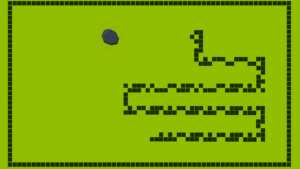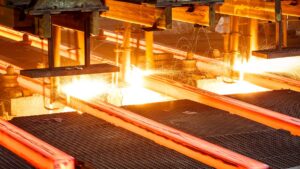Iron ore was a game of two halves in 2021. There’s reason for both pessimism and optimism in 2022

Pic: John W Banagan, Stone via Getty Images
If ever there was a game of two halves it was iron ore in 2021.
The first half of the year was something we’ve never seen before and may never see again.
A perfect storm of supply issues and record Chinese steel production fuelled by post-pandemic stimulus spending sent prices to record levels, scaling to heights of US$237/t on May 12.
China produced an astonishing 573Mt of crude steel from January to June, almost 12% higher than the level it hit in a record 2020, the first year in history when the Asian economic powerhouse delivered more than a billion tonnes of crude steel.
Profits and dividends went through the roof.
Australia’s biggest five iron ore miners — BHP (ASX:BHP), Rio Tinto (ASX:RIO), Fortescue Metals Group (ASX:FMG), Roy Hill and Mineral Resources (ASX:MIN) paid out $59.5 billion for the year to June 30.
Gina Rinehart, Australia’s richest person, banked $3.92 billion from Roy Hill alone, after the 60Mtpa miner delivered $5.6b to shareholders.
Hancock Prospecting’s Atlas Iron business, on death’s door as a listed entity a few years ago, raked in more than $900 million profit as Hancock declared a $7.3 billion profit — a record for a private company and larger than three of the four big banks.
Even junior miner Fenix Resources (ASX:FEX), which only hit steady state production at its Iron Ridge mine in WA’s Mid West in March, paid a $24.8m dividend on just three months of production. It only delivered its millionth tonne in December.
Was this sustainable? Of course not. The wheel turned sharply in the second half of the year.
Chinese steel production sagged to its weakest levels since 2017 due to output cuts enforced on environmental grounds against the backdrop of a trade war with Australia. The Chinese property market went belly up as its second biggest developer Evergrande threatened to collapse under a US$300 billion mountain of debt.
Prices saw their largest quarterly drop since the GFC through the September quarter, falling as low as US87/t before another bull rally sent them above US$120/t to end the year.
After such a volatile year, what on earth does 2022 have in store?
Big four iron ore share prices today:
Has China steel peaked?
The burning question for iron ore prices is whether steel demand has peaked in China.
In 2020, Chinese steel mills defied the bearish notes played by the early days of the pandemic, powering through the second half of the year to produce a record 1.065Bt of crude steel.
In 2021 those same steel mills started like a house on fire, with China on track at one stage to deliver as much as 1.2Bt. The World Steel Association predicted it could be the first year ever in which the world turned over 2Bt of crude steel.
But then Chinese authorities declared steel could not rise above 2020 levels and used targeted emissions restrictions to keep them in check through the second half of the year. By October and November, steel output in the market that matters for prices was down more than 20% year on year after six straight months of declines.
On December 23 the Ministry of Industry and Information Technology, which oversees the steel sector, said it would fall 20Mt short of 2020 levels to around 1.045Bt in 2021.
Port stocks of iron ore have also risen to a 3.5 year high of 157Mt, according to MySteel, although steel inventories themselves are at year lows.
The other question is around steel demand. The heavily indebted property sector — one of the driving forces of China’s economic ascent, which is waning amid stricter government fiscal policy — accounts for up to 30% of downstream steel demand.
China’s government forecaster, their version of our office of the chief economist, believes steel demand will fall 4.7 per cent to 954 million tonnes in 2021 and slide to 947 million tonnes in 2022.
It seems pretty bearish, but many commentators are beginning to see upside after the price of benchmark 62% iron ore fines moved up to a multi-week high of US$126/t earlier this week.
“The really unusual thing here is where all the gloom and doom people were talking about, you know, pandemics, talk of China moving away from steel, and all those sort of things, the price went down to US$95, or just under US$94, whereas in previous troughs it’s been US$50, or even a little bit under,” iron ore market expert and Magnetite Mines (ASX:MGT) technical director Mark Eames said.
“So that’s probably the big surprise here is that we appear to be seeing something of a recovery but we never really had a trough. So that’s quite unusual and it’s quite positive.
“The last six months of crude steel production in China has been the lowest since 2017. This is the lowest steel production we’ve seen for four years or so, so that sounds pretty negative.
“But we could also say that last month for iron ore imports, November, was the sixth highest month that iron ore imports in the entire history of China. The numbers are actually really contradictory when you look at them in detail.”
The Winter Olympics: a major event for iron ore
Beijing will host the 2022 Winter Olympics over two and a half weeks in February and it looms as a major event for the iron ore industry.
China is seeking pure blue skies for the spectacle, something that has seen a number in industrial emitters put on ice to preserve.
Whether those restrictions will be unwound immediately afterwards is a potential turning point for sentiment in the iron ore market.
ANZ commodity strategists Daniel Hynes and Soni Kumari say it is not a given the Olympics will be the trigger for growth in steel mill production many hope.
“We don’t expect the Olympic-induced restrictions to completely give way once again to unbridled growth,” they wrote this month.
“With China targeting peak emissions by 2030, curbs on the steel sector are seen as the easiest way of reaching that goal.
“The industry singularly accounts for nearly 46% of total industrial emissions and 13% of total carbon emissions.”
ANZ sees iron ore prices dropping to US$87/t by the September Quarter and US$85/t by the end of the year with prices falling to US$80/t in 2023. The other big banks are similarly bearish.
Westpac recently adjusted its forecast down from US$82/t to US$75/t end 2022, Commbank looks like it will miss on its end year prediction of US$85/t and sees iron ore paying US$90/t in 2022.
Some of the investment houses are bearish as well. UBS is notably so, with a US$89/t forecast for 2022 and US$65/t long term, while Australia’s Government forecasters see iron ore averaging US$100/t in 2022 before falling to US$74/t in 2023.
Others are more positive.
“I’m positive on iron ore next year,” Minelife analyst Gavin Wendt said.
“Typically China when it gets into any economic difficulty its authorities do come to the rescue with stimulus measures, both fiscal and monetary.
“And one of the one of its fallback positions seems to be to stimulate its construction industry. And of course one of the key beneficiaries of stimulus to the construction industry is the steel industry.”
Wendt says the rising levels of portside stocks could be the result of trading activity to take advantage of lower recent iron ore prices.
“Even though the steel industry in the second half of the year have been easing back on production, their purchasers have been taking advantage of lower prices, I think knowing of course that things will begin to pick up from 2022,” he said.
“Hey, let’s buy iron ore prices whilst they’re low, compared to where they were at their peak at US$230 per ton, they’re now US$100 per tonne or below.
“So we’ve seen a buildup in stockpiles to record levels, even while steel production has been falling, because I think China’s looking ahead.”
A matter of heritage
Rio Tinto’s Juukan Gorge scandal may have taken place in May 2020 but it has cast a long shadow.
The incident has caused a redrawing of the lines around Aboriginal heritage for mining companies after the anger from traditional owners and, more significantly, investors and super funds about the incident saw Rio’s CEO JS Jacques, external affairs boss Simone Niven, iron ore chief Chris Salisbury and eventually chair Simon Thompson fall on their swords.
It would be foolish to think the response will see some brave new world emerge in the history of relations between companies and indigenous communities who own the land they mine on.
But it is already having an impact on mine plans. Rio estimating new mine plans to create larger exclusion and buffer zones around heritage sites that were still in the line of fire, reduced its production in the first half of 2021 by 2Mt and saw it increase production of SP-10, a lower grade product with discounts to the benchmark iron ore price.
Other iron ore miners have faced similar charges and issues. Fortescue quietly went through the courts and pled guilty to two counts of breaching section 18 of the WA Aboriginal Heritage Act because it started clearing a sight on the land of the Eastern Guruma people without their representatives present.
New controversial Aboriginal heritage laws have now passed the WA Parliament. While the State Government says the new laws focus on consultation and agreement making, it fell short of giving Aboriginal TOs the right to veto heritage approvals.
With the final decision making power in the hands of the Aboriginal Affairs Minister, critics of the laws and traditional owners say they will not prevent another Juukan Gorge.
Lion Selection Group’s Hedley Widdup, however, says the fallout from Juukan Gorge could have lasting impacts on iron ore supply out of the Pilbara.
“Probably a significant factor for iron ore and maybe also met coal that I can only wonder about is how fundamentally mine plans have had to change due to sites of significance,” he said.
“The headlines produced around the Rio Tinto Juukan Gorge incident made it clear that there has long been an assumption made by Rio (perhaps others) that sites of indigenous and archaeological significance would not necessarily stand in the way of production.
“The reaction to this made it clear (from investors, and a much broader group of observers) that there is a strong expectation that these sites will be preserved, and the law appears to be catching up.
“I don’t think Rio set out to destroy artefacts, but because it was easier to mine through them they did. If it is no longer easy or possible, then presumably there is additional cost to fill their production schedules brought about by the need to develop separate new supplies or to redesign mines or schedules.”
Inflation pressures
BHP and Fortescue currently mine iron ore at around US$14-15/t while Rio has seen costs move higher to US$18-18.50/t.
While they are still making millions on each shipment of iron ore at current prices — even at prices of around US$105/t a full capesize shipment will rake in ~$22 million before shipping costs — inflation is starting to bite.
Labour shortages from WA’s hard border to keep Covid out, which will come down on February 5, was one issue.
BHP blamed its problems in the September Quarter on a shortage of truck drivers, while Rio said diesel, labour and contracting rates were rising, fingering the labour shortage as the culprit for delaying the opening of its 43Mtpa Gudai-Darri mine to 2022.
“I think the big issue for iron ore will be operating cost and efficiency. WA is an overwhelmingly major source of supply, and is one of the worst hit jurisdictions in the world with respect to COVID restrictions affecting labour force,” Widdup said.
“In the last boom (lets say 2005-2011 ish), the iron ore industry in Australia inflated the cost of mining labour because of its desperation to get bums on seats to aggressively grow their businesses.
“So we know how labour hungry they are, and the effect of COVID (should we be blaming a virus or a Government?) has been to put a ring around the state and severely restrict supply of new labour. That’s one factor on cost.”
Will this come down as WA opens up? It remains to be seen. Widdup warns many of the easy measures to reduce costs like automation have already been paid for.
“Last boom, we also saw the iron ore industry lead the way with technological solutions like remote operations centres, driverless trucks and trains,” he said.
“My impression is the benefits of these innovations are in place – will we see more this boom? Probably not as conversion of existing production, so I suspect efficiency gains will be harder to win also.”
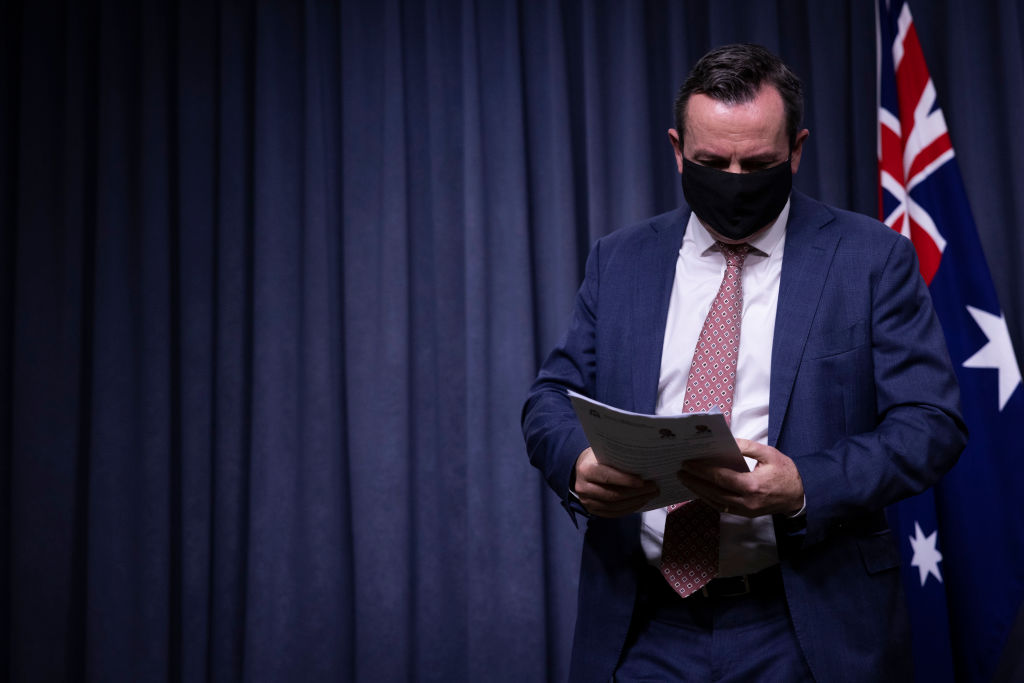
Supply woes
Oh Vale. Vale to your shipping targets.
Brazil’s Vale opened the year with big dreams and heroic production guidance, aiming to once again become the world’s biggest supplier of seaborne iron ore.
It cut production in 2019 to assess and fix tailings dams which could cause a repeat of the Brumadinho dam collapse, a tragedy that killed 270 people.
This year Vale said it wanted to hit a 400Mtpa run rate by 2022. Fat chance. It later said that would be 370Mtpa, with the 400Mt now a ‘medium term’ aspiration.
Vale, a major beneficiary of the rise in iron ore prices through the first half because of its high quantity of premium 65% fines, had planned to deliver between 315Mt and 335Mt of iron ore this year.
In December Vale knocked down the upper end of its guidance to 320Mt. DBX Commodities, which tracks iron ore shipments in real time, forecasts Vale’s final 2021 shipments could be as low as 295Mt, a stunning miss.
FMG hit a record 182Mt for FY21 but Rio Tinto (which thinks it will be able to produce 360Mtpa in a few years) will be a miss as well, having already reduced its guidance from 325-340Mt to 320-325Mt. DBX forecasts it will clear 315Mt.
It is yet to hit its 290Mt limit, suggesting 330Mtpa is a pipe dream for now.
Many of these issues were technical, Rio suffered fires and ensuing maintenance at its East Intercourse Island berth in May for instance, but market watchers say the majors have struggled to do more than replace existing production since 2015.
“It’s been a consistent pattern for a number of years now that the majors have had big production targets — Vale for many years now has had a target of getting to 400 million tonnes — but in practice, their production has been pretty stuck. So very roughly the production from the majors is within 5% of where it was in 2015,” Eames said.
Tribeca Investment Partners Head of Research Todd Warren said he was constructive on iron ore without being bullish, in part because the market is overestimating supply.
UBS for instance, believes as much as 160Mt of latent supply will come from the big miners over the next 2-3 years, with another 30Mt+ emerging from mid-tiers like MinRes.
Warren on the other hand said supply struggles will be a big theme again in 2022.
“The other area that the market is perennially overoptimistic on is new supply entering the market, and we just don’t think that eventuates,” he said.
“Certainly there’s always an overly optimistic view of supply coming out of Brazil and I think that’s ill founded. I think supply will disappoint out of Brazil next year.”
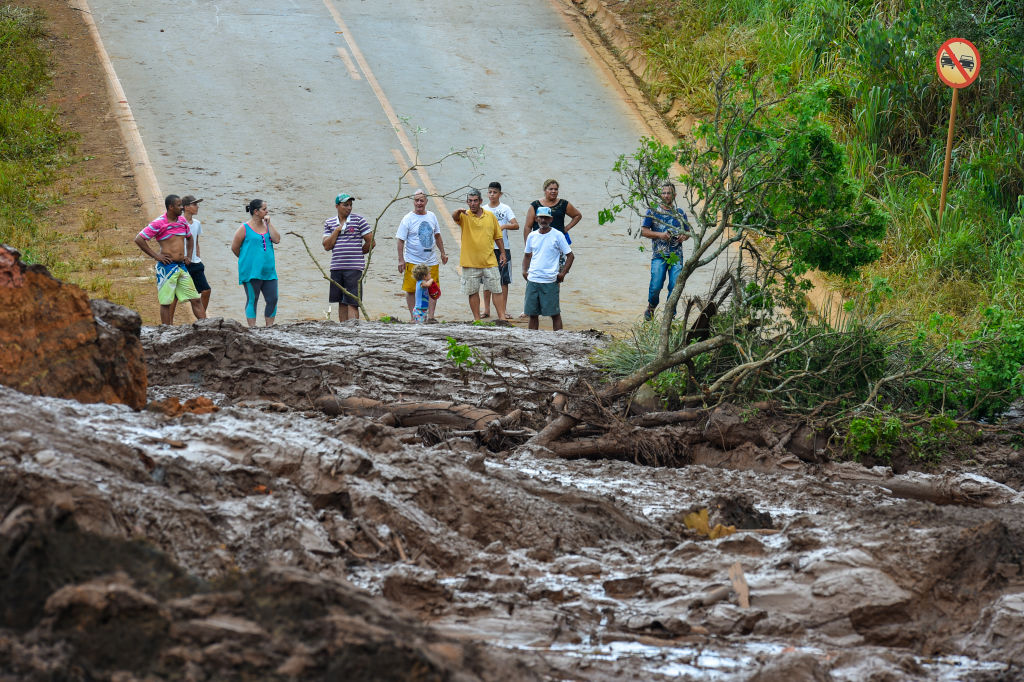
Mid-tiers will continue to pursue growth
One area where additional supply is being prepared is in the Australian mid-tier.
MinRes secured three major deals this year, one its purchase of Aurizon’s 15% stake in Aquila Resources, giving it an indirect 7.5% stake in the undeveloped APIJV, second its purchase of Red Hill Iron’s 40% stake in the RHIOJV, in which the APIJV has the majority stake, and thirdly an agreement with Gina Rinehart’s Hancock Prospecting a Roy Hill to investigate a shared port berth at Port Hedland.
The first step will be its 30Mtpa Ashburton Hub, which includes the Bungaroo South and Kumina tenements and which MinRes’ boss Chris Ellison said the miner wants to have operating by 2023.
That port deal would open new mining fronts for Hancock’s Atlas Iron, which is studying a number of expansion options, with Rinehart’s company also studying the development of its 1Bt-plus Mulga Downs deposit.
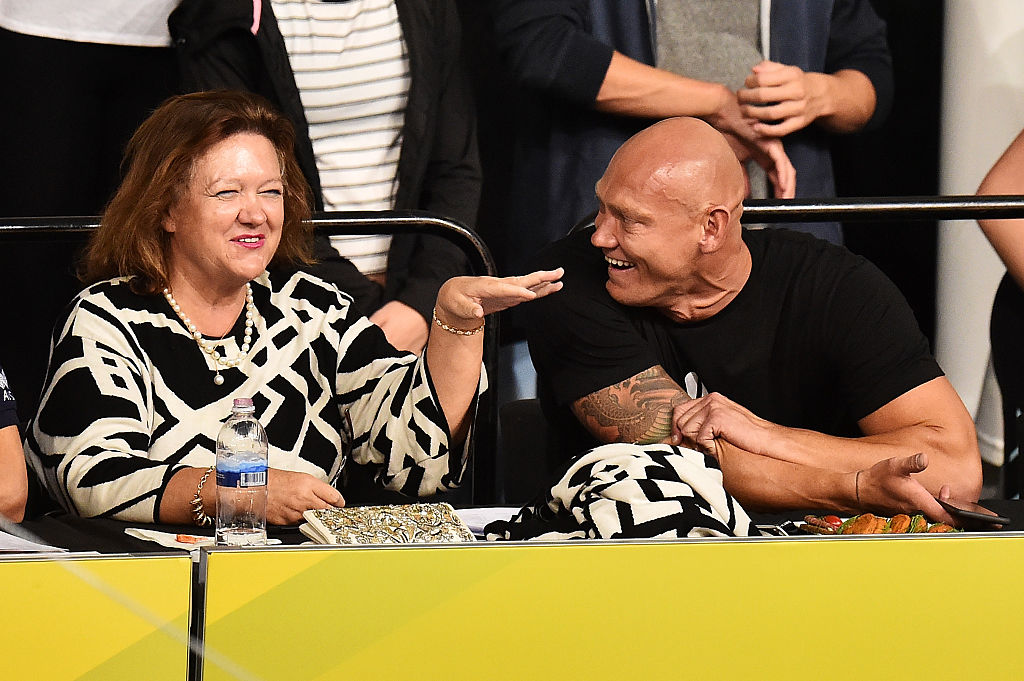
Champion Iron (ASX:CIA) is a lesser known but substantial ASX iron ore player which produces high grade magnetite concentrate in Canada and is ramping up from 7.5Mtpa to 15Mtpa.
The mine’s issues claimed the head of executive Greg Lilleyman in February, who promptly changed his LinkedIn employer to “golf course” before returning to the fray at the CEO of private Nathan River Resources in September, the owners of the Roper Bar mine in the Northern Territory.
The mine will add a premium 68% product to FMG’s low grade, discounted hematite DSO and prepare it for the shift to “green steel” by providing a product suitable to being used in low carbon steelmaking technologies.
Junior miners share prices today:
Juniors ebb and flow
One unusual feature of iron ore in 2021 was how quickly a junior sector re-emerged in response to high prices, years after most speculative iron ore companies abandoned the industry to become lithium stocks.
Many rose and some fell.
Grange Resources (ASX:GRR) was the obvious standout, making an astonishing $373/t (AUD) on iron ore from its super high grade Savage River magnetite mine in Tasmania during the June quarter. It paid a special dividend of 10c a share as an Xmas present to shareholders after amassing a war chest of more than $550 million.
Red Hill Iron (ASX:RHI) was another stunner, selling its stake in the long stranded Red Hill Iron Ore JV in the Pilbara to MinRes for $400 million cash including $200 million straight away.
Red Hill shares are up almost 1090% in 2021, after paying out a $1.20 a share dividend to long-suffering shareholders. RHI still has $120 million in the bank to plan its next move.
GWR Group (ASX:GWR) and Venture Minerals (ASX:VMS) became producers in WA and Tasmania respectively, only to place their mines on care and maintenance as prices went south and freight costs spiralled out of control.
Mount Gibson Iron (ASX:MGX) opened and shut its low grade Shine operation in the Mid West, but has kept its Koolan Island mine in the north, which produces a premium 65% hematite DSO, operating.
Cufe Ltd (ASX:CUF) and Fenix Resources became producers in WA as well. They survived the rout thanks to canny decisions to hedge production at higher prices before the September quarter dip.
Strike Resources (ASX:SRK) also became a producer at its high grade Apurimac mine in Peru, improving its margins by selling its ore to South American steel makers rather than China.
We also saw iron ore floats for the first time in several years as the junior end of the market re-emerged.
Pearl Gull Iron (ASX:PLG) is drilling the high grade Cockatoo Island project near MGX’s Koolan (but listed on the same day iron ore dropped south of US$100/t for the first time in over a year in September).
Equinox Resources (ASX:EQN), Pantera Minerals (ASX:PFE) and Juno Minerals (ASX:JNO) also hit the boards of the ASX.
One micro cap Minelife’s Wendt is keeping an eye on is Kogi Iron (ASX:KFE).
The $20 million minnow trades at just 1.3c but this diversified from its core focus in its Agbaja project in Nigeria in September by adding a WA project to its books.
The deal brought significant backing on board in the form of influential junior resources investors Tolga Kumova and Evan Cranston.
“So from that perspective it brings I think a high profile investor onto Kogi’s register, it diversifies them away from Africa and I think that’s a good thing,” Wendt said.
“I think it’s better to have fingers in two pies with respect to the one commodity that gives them two potential development scenarios down the track.
“I think it’s an interesting longer term play, which could have some medium speculative appeal and longer term development appeal as well.”
Explorers share prices today:
The rise of green steel and high grade iron ore
The blast furnaces primarily used in China have a sneaky secret.
Fuelled by coking coal they actually produce more twice as much CO2 as they do steel, with the sector contributing to 7% of the world’s greenhouse gas emissions.
It has put major mining companies under scrutiny for their Scope 3 emissions — emissions generated by companies, which for BHP and Rio Tinto is in the magnitude of 30 times those produced by their own operations.
One solution is electric arc furnaces, which burn substantially less coal and primarily use recycled steel as their input rather than iron ore.
Another is direct reduced iron. That is the most appealing to green steel proponents because it uses gas rather than coal, an input that could theoretically be replaced with renewable hydrogen.
One looming issue is the availability of high grade iron ore, needed for any form of ‘low emissions’ steelmaking.
That realisation has seen increased investments in high grade iron ore from the majors, all of whom are suffering from declining grade profiles.
There’s FMG with its aforementioned Iron Bridge project and chairman Andrew Forrest’s efforts to turn it into a green hydrogen producer, Rio with the ~67%Fe Simandou development in Guinea (more on that in a bit), Gina paying $9 million to farm in to a magnetite project in WA and BHP with its $3.6b, 80Mtpa South Flank mine, which will make BHP the biggest producer of lump iron ore in the world.
“The challenge I think, for Australia, is our current producers have very large Scope Three emissions, indirect emissions relating to iron ore exports,” Eames said.
“To actually address that issue, we’re actually going to have to change the composition of the Australian export supply if we’re going to keep up and retain our number one position as an iron ore exporter.
“And we’re going to have to move towards significant volumes of high grade iron ore products if we’re going to retain the ground.”
A number of magnetite iron ore owners have emerged in the past year to stake their claim to a part of this transformation, alongside existing ASX-listed high grade producers like Grange Resources and Champion Iron.
Notably, Magnetite Mines released a PFS on its Razorback mine in South Australia and has moved to the next phase of its development with a DFS planned to be released late this year.
MGT placed a price tag of US$429-$506M (A$572-$675M) on its go forward case, with an NPV of A$669M and 20% IRR.
Razorback would deliver an average of 2.7Mtpa of 67.5% plus magnetite concentrate over an operating life of 23 years, and has the advantage of utilising green power from South Australia’s wind-rich grid.
While China’s desire to reduce its emissions in line with its 2060 net zero target has been reported as a potential motivator for it to send the steel industry into structural decline, others are not so certain given the extremely large quantity of steel needed to build renewable energy plants like wind farms.
This could see more steel demand come from growing markets outside China like India, Europe, Brazil and the US.
“On our view, steel demand is picking up in the RoW (rest of world) and more of that will be met by onshore production and not Chinese exports,” Jevons Global’s Kingsley Jones said.
“Costs of production are going up worldwide, but you can tell it is a demand pull market because steel maker margins are still good: look at US Steel in the USA, ArcelorMittal in Europe and JSW Steel in India.
“None of this gets discussed in Australia due to myopia about China. However, it is a big opportunity in steel because the greening of infrastructure will be more steel intensive. There is as much as 200 to 400 tonnes of steel in every offshore wind-turbine.
“The estimated total capacity of coal fired power plants is somewhere around 2000 GW or roughly 8500 plants.
“You are not going to replace that in one year, and not all with wind. If you did, that would be around 540Mt of demand. The assumption that we will not find new uses for steel (and concrete) in a green economy just don’t make sense.”
Jones said Jevons Global sees iron ore averaging US$90 to US$100 with upside to US$130/t if the real estate concerns recede.
Other ASX-listed companies with high grade iron ore projects include Hawsons Iron (ASX:HIO) (formerly Carpentaria Resources), which raised $35.6m for a BFS on its project near Broken Hill and claims can deliver a 70% iron ore product and Strike Resources with its Apurimac project in Peru, while a number of companies are studying magnetite resources in and around the Yilgarn Goldfields including Koolyanobbing owner MinRes.
The threat of Simandou
China, however, is still the market that matters, and the year has been peppered with threats that China wants to break the monopoly supply out of Australia in three ways.
Firstly, it wants to ramp up its domestic iron ore production after shutting down a number of mines in recent years for safety reasons.
Secondly, it wants to increase its use of scrap steel, a tall order given imports are expensive, the majority of China’s construction builds are not old enough to guarantee a large supply of internal scrap and China’s penetration of EAFs is not high.
Thirdly, and most significantly, it wants to source supply from mines funded by China overseas.
The most significant of these is Simandou, the giant Guinean deposit described by Rio Tinto executive Bold Baatar as the Rolls Royce of iron ore mines.
Simandou has received more airplay than ever in 2021, as SMB Winning, the Chinese-backed Singaporean, French and Guinean consortium that won a bid for two blocks at Simandou began blasting for a 650km railway through the country’s harsh, mountainous jungle.
Rio Tinto owns the other two blocks with its major shareholder, China’s Chinalco, and recently said it plans to make an investment decision on Simandou in 2022, which it scotched only 6 years ago due to falling prices and its reported ~US$20 billion capital cost (around 8 times the Gudai-Darri replacement mine in the Pilbara).
But 2021 has also demonstrated the issues of operating in Africa’s shady iron ore business. Case in point Sundance Resources, which was Macbethed by onetime corporate partner AustSino Resources Group.
After introducing AustSino to government officials in Cameroon and the Republic of the Congo where Sundance’s Mbalam-Nabeba project, Sundance’s project was expropriated only for Australian-domiciled but Chinese linked AustSino and Hong Kong listed finance company Bestway to be announced as the new developers.
Guinea, a major bauxite exporting nation cultivated by China, suffered a coup in September, further underlying the tough political conditions in West Africa.
Simandou has been reported as the Pilbara killer due to claims it could bring as much as 200Mt of high grade supply into the market by 2030.
Others are more cynical, noting the history of failed investments in iron ore in Africa.
“At the moment, there’s very little supply into China from from Africa from Chinese investment,” Eames, a former executive at Rio, BHP, Glencore and X-Strata said.
“And Simandou is a very long term proposition, it’s at least 10 years away in my view as a practical development, given the sheer scale and the political, social, economic and environmental complexities surrounding it.”
Australia, on the other hand, is viewed as being a conveyor belt for the Asian steel industry.
“I think there’s no easy answers in a sort of zero to five year timeframe for China,” Eames said.
“Australia has continued to supply ore at competitive levels and for most of the past 50 years the relationship between China and Australia has been very good.
“There’s a lot of supply depletion issues in the Pilbara which means we need to build new mines anyway.
“Sure, it would be very sensible for any steel mill anywhere to look at iron ore supply as a critical issue.
“But the reality is Australia’s got some great resources, and they’ll play a significant part in in the global iron ore industry for many years to come.”
At Stockhead, we tell it like it is. While Magnetite Mines, Venture Minerals, Strike Resources, Pantera Minerals and Cufe Ltd are Stockhead advertisers, they did not sponsor this article.
Related Topics
UNLOCK INSIGHTS
Discover the untold stories of emerging ASX stocks.
Daily news and expert analysis, it's free to subscribe.
By proceeding, you confirm you understand that we handle personal information in accordance with our Privacy Policy.
